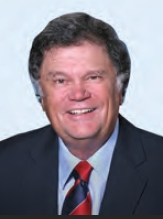More to the History of Golf Instruction
 The year was 1986, golf schools were still in their infancy, and Mickey Powell was the president of the PGA of America. I had many golf school locations across the country, and one particular location at
The year was 1986, golf schools were still in their infancy, and Mickey Powell was the president of the PGA of America. I had many golf school locations across the country, and one particular location at
Sandpiper Bay Resort in Port St. Lucie, Florida, was extremely busy during the winter months. In fact, we were so busy that I received an interesting phone call from Mr. Powell, asking if I could meet in West Palm Beach with several of their members. It was only a one-hour drive, so of course I drove down for the meeting.
I was ushered into a conference room and seated in a prominent spot at the end of the conference table with six to eight key PGA representatives. After introductions and some pleasant small talk, it did not take long to get to the crux of the meeting. Our golf school location at Sandpiper Bay Resort (which is now Club Med) was averaging 35 to 40 people every week, yet the school at PGA National was averaging only eight to ten people. During the course of the meeting, I was asked two point-blank questions: The first was, “What are you doing differently to attract so many people?”
When it comes to teaching golf, I’ve always been one to share my thoughts and ideas. Even though this was basically a competitor asking to share my secrets to success, I felt it was just the right thing to do in order to help the cause. I started off by letting them all know that most of our customers were from word of mouth, individuals who had attended one of our golf schools and told others how they had improved and what a great time they had experienced. I then talked about the importance of hiring great teachers, personable individuals with knowledge and empathy who devote their attention to the customer and can
listen to their questions, statements, and feelings; teachers who valued the presence of each client and made them feel important.
Of course, as I was talking, I was looking into the eyes of my audience and could not help feeling that my words and thoughts were new to everyone. I continued in sharing the fact that we had a staff meeting every day at 4:00 p.m. to review the day, discuss any problems that may have arisen with any particular student, along with certain drills that may help, but most importantly, I always asked if everyone enjoyed their day and had a good time. All staff were constantly reminded that golf is a game and it should be fun. Not only did our guests want to learn, but they were also on vacation and wanted to enjoy themselves. A good teacher can accomplish this by demeanor, tone of voice, experience, and professionalism.
I had a feeling that all PGA leaders present at the time were enjoying the answer to the question they had posed, so I continued with common sense things like the importance of remembering names and addressing our guests by their first names, the importance of brevity in their teaching so that the student is not overwhelmed and learning can in fact take place, the importance of properly demonstrating certain drills, and of course, being able to detect and correct mistakes in as few words as possible. The last thing I shared was the fact that every class had a group picture taken. There was an incredible amount of camaraderie shared by our guests every week, and the smiling photos that each student took home reflected this.
And now for the second question that was posed to me: “Mr. Bryant, how would you like to run our golf school facility here at PGA National?” I replied, “Well, not really gentlemen, plus I’m not a PGA member!” I was asked, “Why aren’t you a PGA member?” I said, “Well, basically I love to teach the game. I’m not really interested in cart repair, merchandising, agronomy, or running a pro shop. I’m not really interested in the entire four year apprentice-ship program that is currently in place, the prohibitive cost to everyone, nor the unfair cost of annual dues.” Needless to say, I was happy to keep my current position in the teaching industry!
But that was nearly 30 years ago, and sharing this information on teaching with the leaders of the PGA gave me the incentive and confidence to initiate the USGTF. I realized that teaching golf was certainly not a priority for the PGA of America, and taking the golf teaching profession and making it a separate entity unto itself was what truly needed to be done. And as they say, “The rest is history.” The USGTF branched out to encompass the world with 42 WGTF member nations and over 25,000 members worldwide. Industry partners include the International PGA, along with major golf companies, who certainly recognize the value of being associated with the USGTF.
Today, the PGA places more emphasis on teaching – undoubtedly in part due to the influence of the USGTF – but its main focus is still on running the golf operation. As a result, the USGTF has thrived, attracting a diverse group of individuals who, like I did so many years ago, simply want to specialize in teaching.




